Open Cities 11 Open-Closed-Divided-Stitched Up
All the posts under ‘Open Cities’ have been written for the British Council Open Cities project and published on its website.
http://opencities.britishcouncil.org/web/index.php?home_en
The reason why they are reproduced on the Urban Thinker website is that there is not enough space for all the illustrations which go with the posts on the British Council Open Cities website.
Open Cities 11
Open-Closed-Divided-Stitched Up
Berlin revisited
On 9 November 2009 20 years had lapsed since the Berlin wall was torn down. The event was embraced by incredulous and optimistic Germans on both sides while the world was looking on, stunned, pleased in parts and wary in others. The Spectre of an all mighty Germany re-emerging haunted survivors of the war, and mental images of fascist Berlin reignited fears among the fighters of crimes against humanity. Others considered the reunification of Germany bound into the European Communities a guarantee for lasting peace and an opportunity to extend liberal Europe far into its historic eastern boundaries.
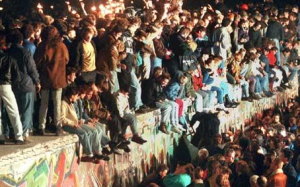
Dia 1 People east and west at the fall of the Berlin Wall 1989
Re-stitching or integrating?
Although water never stopped flowing between the two halves of Berlin, unbeknown to the water workers in East Berlin [BBC radio 4, 24/11/09 Rosie Goldsmith, 1989 Re-stitching the City], most other connections – physical as well as mental – were severed, possibly beyond repair. The enclave propped up by the West survived in its communist surrounding as a useful piece of propaganda during the cold war. Severed from its surroundings it had to rely on its own utilities and recycle resources before its time.
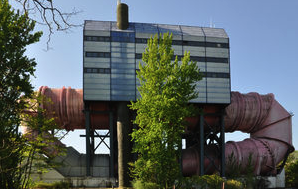
Dia 2 District heating in city centre designed by Ludwig Leo
I remember how life at the time of heightened antagonism was artificially open in West Berlin. Any new blood was welcome, especially non Germans who were able to act as go-betweens with East Berlin. In the perception of Westerners East Berlin was a closed city with no chance of opening up. Nevertheless, they were keen to coordinate the planned motorway half moons on either side of the two Berlins, just in case.
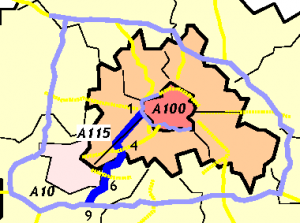
Dia 3 Coordinating the two Berlin’s motorway crescents
Benefiting from State subsidies many creative and experimental projects were hatched in West Berlin. Keeping it open to the world, it had become an international architects’ paradise which widened the gap between the two halves.
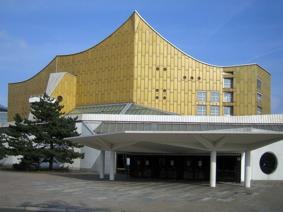
Dia 4 Concert hall designed by Hans Scharoun, chief planner who conceived the reconstruction of West Berlin
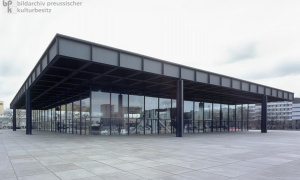
Dia 5 Museum of modern arts designed by Mies van der Rohe invited by Senator of Construction Hans Duttmann
Scars from closure
Signs of lasting divergence were apparent already in the sixties. Enclosing a city and excluding others for a generation – a full 28 years as it turned out – is bound to leave permanent marks.
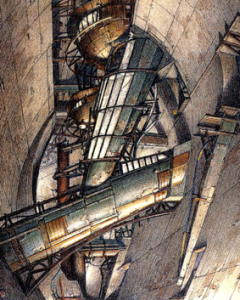
Dia 6 Artist impression of escape tunnel during cold war
Opinions differ on how Berlin was reunited. After an initial consumer frenzy, the Easterners gradually realised the loss of their guaranteed ‘civic rights’ to a home, education, a job, a pension, health care, albeit at the high prize of individual and collective freedoms.
If openness also means right to identity, memory, shared values East Berlin seems to have suffered a terminal blow. The wall was torn down hastily, together with many symbols of the communist era, among them the place of polity under techno-pretexts. However, those who had lived within the enclosure feel the absent wall each time they cross it…
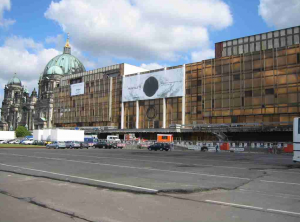
Dia 7 Palace of the Republic, East Berlin Parliament torn down hastily under pretext of asbestos
Post hoc rationalisation is rife. Walter Momper, the mayor of West Berlin when the wall came down thinks that utilities were reconnected at a record speed. Others like Bruno Flierl, an East Berlin planner, are more critical of the western take over. Berlin was re-stitched to receive inward investment to grow as the German capital again.
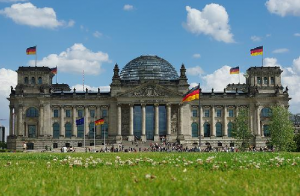
Dia 8 Regenerated Reichstag, seat of Federal Parliament by Norman Foster
It even had the ambition of becoming the capital of Europe banking on the premise that Europe would be shifting its centre of gravity to the East after the demise of communism. But was Berlin or can it ever be re-integrated? Can it become a truly open city again?
Scenarios
At an Anglo-German seminar hosted by the Goethe-Institut in 1991 planners, developers, politicians, economists and social scientists compared development strategies between London, which was trying to recover from one of its recessions and Berlin which faced scenarios ranging from decline to stagnation or, conversely, optimistic doubling of its population. Unconstrained by a green belt which developers consider London’s stranglehold, Berlin which was artificially confined to its cold war wall had the opportunity to grow into empty surrounding Brandenburg where ample cheap land was available. However, different barriers prevented that, except for initial uncontrolled and uncontrollable sprawl led by ‘consumer temples’ which captured unfulfilled demands financed by unspent and unspendable Eastern savings.
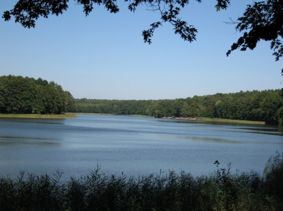
Dia 9 Ample high quality land around Berlin inviting sprawl
Re-conquer openness
Once the honeymoon between the two Germanies was over high expectations hampered German reunification, After the initial reinstatement of dense buildings on the no-man’s land where the wall once stood, neither investment nor people were flocking to Berlin which had to struggle with the legacy of its division and the need of the east to catch up.
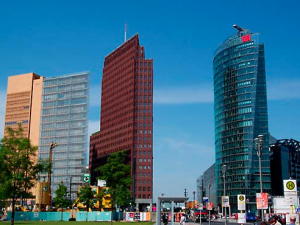
Dia 10 ‘wow’ architecture Potsdamer Platz
Twenty years after the two halves of the city were reunited and endowed with a unified governance, Berlin is coping slowly with its double debt despite hefty, long term taxpayer contributions. Meanwhile, London had acquired a voice with its elected mayor and started to grow again against expectations or urban theories. Is there a lesson to be learnt about city openness and the style of governance?
End.
